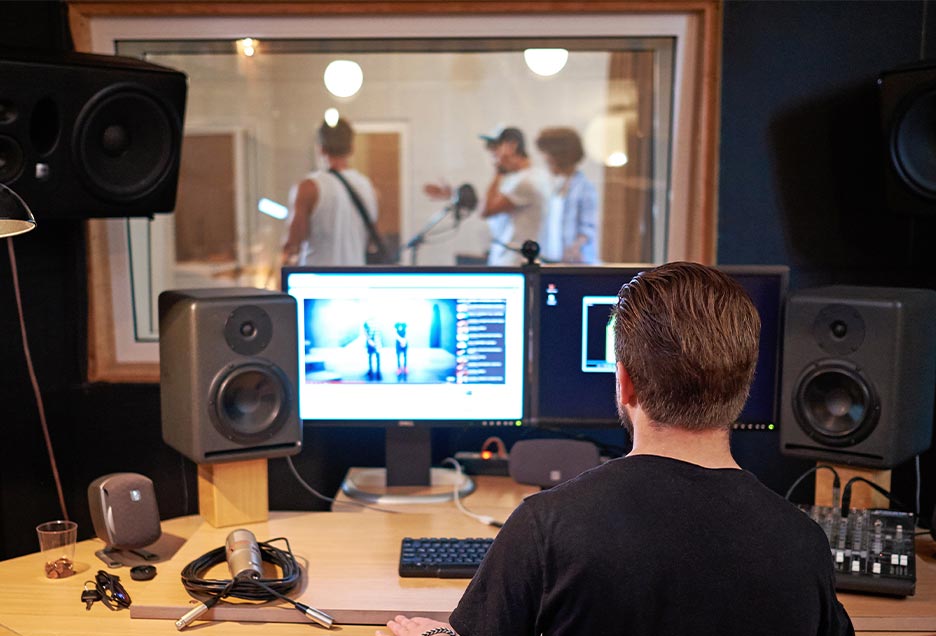As a company we decided a long time ago that we would only offer Apple as a computer solution for our school customers. In part this was because we loved the product, finding that it was easy to use, and also pretty intuitive for teachers and pupils alike. Reliability was another factor, with (in our experience) far fewer technical problems arising with Apple than with Windows-based PCs. The deciding factor was probably the fact that GarageBand is included with all Macs, and Logic is pretty well accepted as an industry standard music program, and in widespread use in both Higher and Further Education.
Yes, we know, they're not cheap! So many teachers comment on Facebook groups and forums that their school has told them they can't afford Apple, and that they must chose a Windows solution. Some schools insist on PCs because they think Macs can't become part of their existing IT infrastructure (for more information on why we think Macs can work in any school, see my article here on how to set up Apple computers in a school environment).

Yet in spite of the negatives, there are still many reasons why schools can and should consider using Macs in their music department. But if you win the battle to approve the expenditure, which Mac is going to be best for you?
If you have the budget, the Mac Studio is ideal for any dedicated recording facility. Of course, iMacs and Mac minis are also viable alternatives here, where a computer is going to be permanently located in a fixed location.

For mobile recording, or for checking pupil work at home, the best option will be one of the excellent MacBook or MacBook Air models. Just be careful to check out which ports are included on the model you plan to purchase: some have only two USB-C/Thunderbolt ports, and one of these will normally be needed for the power supply. You may need to purchase a USB hub if planning to connect more than one music device to your laptop.

While some schools do successfully operate laptop trolleys that can be moved from room to room as and when needed, in general we advise that wherever possible workstations should be permanently set up in a dedicated space. Connecting and reconnecting all the time can be detrimental to the equipment, and the smaller size of most MacBook screens will be another disadvantage.
So, that really leaves us a choice of iMac or Mac mini, at least for multiple-computer music ICT suites in most schools. There are pros and cons for each option, as you’d expect, so we’ll list these below in each case. Every school will have its own specific requirements of course, so what is best for one school may not be right for you.

iMac
Pros
- Integrated all-in-one unit
- Good screen size
- Multiple connection ports (though see Cons below as well!)
- Attractive solution which looks well in any classroom
- Excellent speaker system built in
Cons
- Price - even the base iMac model is over £1000
- Base model does not have Ethernet included as standard
- Keyboard and mouse supplied are wireless rechargeable models
- Wireless keyboard does not have the numeric keypad, which is useful for many software shortcuts
- Only Thunderbolt and USB-C connections, not USB-A which is still used on many keyboards and interfaces

Mac mini
Pros
- Price - even when a monitor screen and keyboard/mouse are added (they are not included with the Mac mini), the total price can be close to that of an equivalent PC
- Currently they are supplied with both USB-C and USB-A ports, along with Ethernet and HDMI connections
- You can choose your preferred size and specification of monitor as one is not included
Cons
- You need to source other items to make a viable music workstation
- Choice of processor & therefore performance can be more limited
- Security may be any issue, as a Mac mini is relatively small and easily lifted! (however, security solutions are available)
- It may be necessary to purchase a USB adaptor or hub if you have to connect several USB-A equipped peripherals (keyboard, mouse, interface etc)
- No built-in speakers
If budget is a major concern, then the Mac mini option will usually be the best option. And if you are worried about security, then the monitors can be supplied with a lockable Mac mini mount, which means the computer is hidden behind the monitor and attached to it.
Finally, whichever Mac you opt for, as we've stated above we’d advise that you request a computer keyboard and mouse with cables, not the wireless Apple versions. Having to recharge keyboards and mice continually can be a real issue in class, and the standard Apple keyboard supplied with the iMac is not only wireless, but also lacks the numeric keypad that is used for software shortcuts like record, play and stop by many music applications.
Contact us if you need any more information or advice – we’d love to help!





